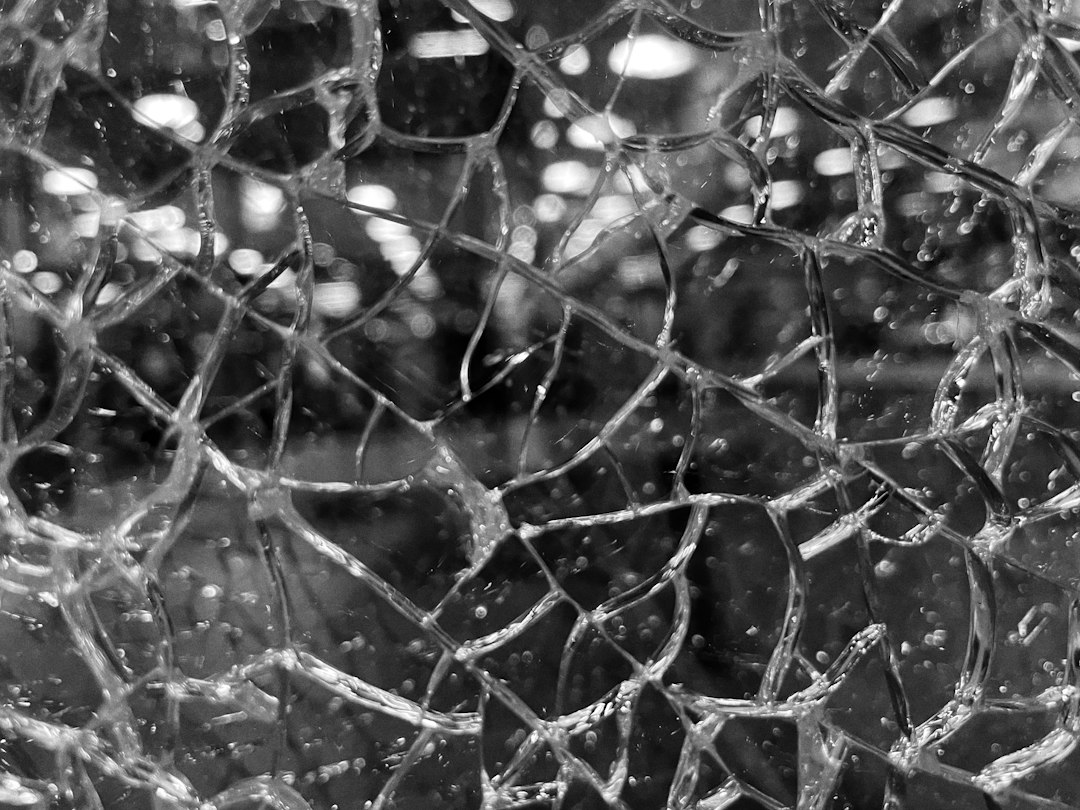Does property insurance cover hail damage? Yes, if you have comprehensive coverage. There are two fundamental points you should keep in mind when it comes to insurance coverage for hail damage.
Welcome to the ‘Ultimate Guide to Hail Damage Insurance Coverage.’ Our aim at Insurance Claim Recovery Support is to demystify the complex world of insurance coverage for hail damage, helping you understand what your policy covers, what it doesn’t, and what to do when hail causes damage to your property.
Hail storms, with their ability to significantly damage properties, can lead to substantial financial stress for property owners. However, you may breathe a sigh of relief if you have the right insurance coverage in place to handle these unexpected costs. It’s crucial to know that comprehensive insurance typically covers hail damage, while auto liability cover does not. This critical distinction could make a huge difference to your financial responsibility following a storm.

Join us as we delve into the specifics of these different types of coverage, the process of filing a claim, the potential impact on your premium, and the ways to protect your property from further damage. We’ll also shed light onto some of the unethical practices of insurance companies and how we, at Insurance Claim Recovery Support, can help you navigate these complexities. Let’s get started!
Understanding Hail Damage and Its Impact on Properties
What is Hail Damage?
Hail damage refers to the harm caused by hailstones, which are chunks of ice that form within thunderstorms and fall to the earth. These hailstones can range in size from small peas to large grapefruits, and their speed can vary between 44 mph and 72 mph. When these ice missiles strike, they can wreak havoc on cars, homes, and other properties.
Hailstorms are most prevalent in areas known as “Hail Alley,” including Texas, Colorado, Nebraska, and Wyoming. However, they can occur anywhere in the United States and at any time. In 2020 alone, over 6.2 million properties were affected by one or more damaging hailstorms, with Texas and Illinois being hit the hardest.
How Hail Damage Affects Your Property
Hail damage can have a significant impact on the value and functionality of your property. This could be in the form of dents in metal materials, roof systems, windows, siding, stucco, HVAC equipment, gutters, downspouts, shutters, even damage to landscaping, light fixtures, and exterior features.
In the case of a hailstorm, it’s important to have your property inspected by a professional, as hail damage can sometimes lead to more serious problems such as leaks and structural damage. Even seemingly minor cosmetic damage, if left unaddressed, can decrease the value of your property significantly, and deter potential buyers.
At Insurance Claim Recovery Support, we strongly recommend having your property, especially your roof, inspected prior to storm season to prevent exacerbating existing damages. We also encourage you to understand the impact of hail damage on your property’s value, so you can take the right steps to restore your property and protect its value.
Understanding the risks and potential damage is the first step in ensuring you get the hail damage covered by insurance that you deserve. The next step? Understanding your insurance coverage.
The Role of Comprehensive Insurance in Covering Hail Damage
What is Comprehensive Insurance?
Comprehensive replacement cost value (RCV) insurance is a type of insurance coverage that is designed to cover damage to your property that is caused by hail, fire, wind, theft, vandalism, falling objects, and even damage caused by lightning.
RCV insurance is not a mandatory coverage in most states, but it is highly recommended especially if you live in areas prone to severe weather conditions such as hailstorms.
How RCV Insurance Covers Hail Damage
RCV insurance plays a pivotal role when it comes to getting hail damage covered by insurance. This is why it’s crucial to review your policy details and consult with your insurer or a public adjuster from Insurance Claim Recovery Support to clarify any doubts or confusions you might have.
In short, comprehensive insurance is a powerful tool to protect your property from hail damage. Knowing the specifics of your coverage can help you navigate the claim process smoothly and avoid any unpleasant surprises.
The Process of Filing a Hail Damage Insurance Claim
When it comes to hail damage covered by insurance, knowing how to file a claim is crucial. It’s a process that requires attention to detail and timeliness.
Steps to File a Hail Damage Insurance Claim
- Understand your insurance coverage. Know what your policy covers and the extent of your coverage. This knowledge will guide you in making informed decisions throughout the claim process.
- Document the damage. Right after the hail storm, take pictures or videos of the damage. This evidence will be crucial when you file your claim.
- Prevent further damage. Make temporary repairs to prevent any additional damage. Remember to keep receipts of these repairs, as you may be able to include these costs in your claim.
- Contact your insurance company. File the claim as soon as possible. Provide all necessary information, including the date of the hail storm and the extent of the damage.
- Work with a public insurance adjuster. A public adjuster can help you navigate the claim process, ensuring you get the settlement you rightfully deserve.
Working with a Public Insurance Adjuster
Insurance claims can be complex and overwhelming, especially if you’re dealing with significant property damage. This is where a public insurance adjuster, like our experienced team at Insurance Claim Recovery Support, can be a game-changer.
A public insurance adjuster works for you, the policyholder, not the insurance company. They’re experienced in understanding insurance policies, assessing property damage, and negotiating with insurance companies. They can handle the entire claims process on your behalf, from filing the initial claim to negotiating the settlement.
Our expert, Scott Friedson, can guide you through the hail damage insurance claim process. He’ll help you understand your policy, evaluate your property damage, and work tirelessly to get you the best possible settlement.
You don’t have to navigate the daunting task of filing a hail damage insurance claim on your own. Our team at Insurance Claim Recovery Support is here to help, ensuring you can focus on what matters most – getting your property back to its best condition as quickly as possible.
The Impact of Hail Damage Claims on Your Insurance Premium
After experiencing hail damage to your property, it’s natural to wonder how filing a claim will impact your insurance premium. The good news is, understanding how this works can help you make informed decisions.
How Hail Damage Claims Affect Your Premium
Typically, hail damage is considered an Act of God – a natural event beyond human control. As such, most insurance companies won’t increase your premiums due to a single hail damage claim. This is because the damage wasn’t caused by negligence or lack of maintenance on your part. However, it’s not always so straightforward.
According to the National Association of Insurance Commissioners, claim frequency may affect what you pay for insurance. If you’ve filed another home insurance claim within the past three years, your premiums might increase after a second claim, regardless of the reason. This is a standard practice among many insurance providers to offset the risk associated with multiple claims.
Also, location plays a key role in determining your insurance premium for hail damage claims. In regions where hail storms are common, insurance companies might increase premiums to offset the higher risk.
Ways to Mitigate the Impact on Your Premium
To balance the cost of repairs and potential premium increases, here are some steps you can take:
Understand your deductible: Know how much you’ll need to pay out-of-pocket before your insurance coverage kicks in. If the cost of repairs is less than your deductible, it might not be worth filing a claim.
Maintain your roof: Your claim’s success can be influenced by your maintenance of the roof. Regular maintenance can prevent minor damage from becoming a major issue, decreasing the likelihood of multiple claims.
Review your policy regularly: At Insurance Claim Recovery Support, we recommend regularly reviewing your policy to understand what is covered and what isn’t. Knowing the limits of your coverage and the amounts of your deductibles can be crucial in the event of a hail damage claim.
We are here to help. Our team at Insurance Claim Recovery Support can guide you through the complexities of the claim process, ensuring your claim is properly assessed, and that you receive a fair settlement.
Texas Statute of Limitations for Filing a Hail Damage Claim
Understanding the Statute of Limitations
In the state of Texas, the statute of limitations for filing a hail damage claim is typically two years from the date of the hailstorm. That means you have a two-year window to file a claim for any hail damage your property might have sustained.
The statute of limitations is a law that sets the maximum time after an event within which legal proceedings may be initiated. This time limit exists to ensure that claims are made while evidence is still relatively fresh, and witnesses’ memories are still reliable.
However, the specifics of your policy may vary, and understand the details of your insurance coverage. If you have any confusion about the terms of your policy, don’t hesitate to seek help from a professional. Our team at Insurance Claim Recovery Support can provide you with expert advice and guidance, helping you understand your rights and responsibilities as a policyholder.
Importance of Timely Filing of Hail Damage Claims in Texas
After a hailstorm, it’s crucial to act quickly. The sooner you file a claim, the sooner you can get the funds you need for repairs and restore your property to its pre-storm condition.
However, the importance of filing a hail damage claim promptly goes beyond just financial considerations. Quick action gives you a better chance of building a strong case. It’s easier to document the damage and its impact right after the incident—details that can strengthen your claim and increase your chances of a fair settlement.
But being prompt doesn’t mean rushing through the claim process. It’s equally important to thoroughly document all damage and gather comprehensive evidence to support your claim. If you’re unsure about any aspect of this process, we at Insurance Claim Recovery Support can help. We’ll guide you through the entire process, ensuring your claim is as strong and complete as possible.
Even though Texas law provides a two-year window for hail damage claims, it’s in your best interest to file a claim as soon as you notice the damage. Not only will this give you a head start in the recovery process, but it can also help prevent further damage and associated costs.
As a policyholder, understanding the statute of limitations for filing a hail damage claim is crucial. By acting promptly and strategically, you can navigate the claims process effectively and ensure that you receive the compensation you deserve for your hail damage claim.
Protecting Your Property from Hail Damage
Taking proactive steps to protect your property can minimize the impact of hail storms. After all, it’s better to prevent damage where possible than deal with the aftermath.
Other Preventive Measures Against Hail Damage
Firstly, regular roof inspections by a professional can help identify and address any existing damages before storm season, preventing them from exacerbating during a hail storm. At Insurance Claim Recovery Support, we always recommend pre-storm season inspections to our clients.
Secondly, it’s crucial to pay attention to your outdoor decorations and other exterior features. Hail can cause significant damage to these items, leading to potential mechanical issues and decreasing the overall aesthetics and value of your property. Regular maintenance and timely replacements can help prevent such issues.
Finally, investing in comprehensive insurance coverage that includes hail damage is important. The specifics of how insurance covers hail damage can vary greatly depending on the policy and the insurance company, so it’s essential to familiarize yourself with these details.
The extent of the damage you can prove will directly impact the amount you get compensated by your insurance company. So, taking preventive measures not only protects your property but also ensures you are better prepared when filing a hail damage claim.
At Insurance Claim Recovery Support, we understand that navigating through the complexities of insurance claims can be daunting. That’s why we’re here to help guide you every step of the way, ensuring you understand what kind of damage is covered by your insurance and helping you receive the compensation you’re entitled to.
Conclusion
Hailstorms can wreak havoc on commercial, multifamily, and apartment properties, leaving property owners with significant repair costs and a complex insurance claims process to navigate. Understanding how your insurance policy covers hail damage is crucial to ensuring you receive the compensation you are entitled to.
As we’ve explored, comprehensive insurance typically includes hail damage, protecting you from the financial burden of repairing or replacing your property. However, familiarize yourself with the specifics of how insurance covers hail damage, as policies and coverage can vary greatly. Auto liability insurance, on the other hand, does not cover hail damage, leaving you responsible for repair costs if you only have this type of coverage.
Filing a hail damage insurance claim can be a complicated process, but it’s a necessary one if you want to mitigate the financial impact of hail damage. Working with a public adjuster, such as the experts at Insurance Claim Recovery Support, can help you navigate the process and ensure you receive a fair and prompt settlement.
While a hail damage claim can potentially affect your insurance premium, taking preventive measures and understanding your insurance policy can help mitigate this impact. Additionally, it’s important to understand the statute of limitations for filing hail damage claims in Texas to ensure you don’t miss the window for submitting your claim.
At Insurance Claim Recovery Support, we’re here to advocate for policyholders and help them navigate the complexities of the insurance claims process. With our expertise and guidance, we strive to help property owners receive the compensation they are entitled to. Whether you’re in Austin, Dallas, Fort Worth, San Antonio, Houston, Lubbock, San Angelo, Waco, Round Rock, Georgetown, or Lakeway, our team is ready to support you through the process.
In the end, knowing what your insurance covers and how best to protect your property can give you peace of mind when dealing with the aftermath of a hailstorm.
About Insurance Claim Recovery Support LLC
Services Offered by Insurance Claim Recovery Support LLC
At Insurance Claim Recovery Support LLC, we are not just a public adjusting firm; we are policyholders’ advocates. Our team is dedicated to ensuring that your interests are protected throughout the hail damage insurance claim process. We offer a wide range of services designed to give property owners like you the professional help you need. Our services include gathering evidence, filing necessary paperwork, meeting with the insurance adjuster, and getting professional assessments. Our goal is to ensure that your hail damage covered by insurance claim is handled effectively and efficiently, resulting in a fair settlement for you.

How Insurance Claim Recovery Support LLC Advocates for Policyholders
Scott Friedson, our topic expert at Insurance Claim Recovery Support, understands the intricacies of insurance claims and the tactics employed by insurance companies to minimize payouts. Our commitment to you extends beyond the settlement. We provide ongoing support throughout the entire claims process, from the initial filing to the final resolution. Our dedicated team will be there to answer your questions, address your concerns, and provide you with regular updates on the progress of your claim. We work on a contingency basis, which means we only get paid when you do. This makes us not just your advocates, but partners invested in your success.
Areas Served by Insurance Claim Recovery Support LLC: Austin, Dallas, Fort Worth, San Antonio, Houston, Lubbock, San Angelo, Waco, Round Rock, Georgetown, Lakeway
We are proud to serve policyholders across Texas cities, from Austin to Houston, and from Dallas to San Antonio. We have helped homeowners navigate a wide range of claims and overcome various challenges. Whether it’s recovering a fair settlement after a hailstorm in Dallas or assisting a property owner who was initially denied coverage for hurricane-related roof damage in Houston, we’ve seen it all. If you’re facing a property damage claim in any of these Texas cities, you don’t have to do it alone. Our professional assistance is just a call away.
Texas Fire and Storm Damage News and Insurance Claim Process Information
In Texas, cities like Lubbock and Waco face the additional challenge of wildfires, which can cause extensive property damage. Understanding the local weather patterns and the types of damage they can cause is vital to ensuring your insurance claim is comprehensive and accurate. We keep you updated with the latest fire and storm damage news and insurance claim process information, so you are always one step ahead.
For more information about our services, please visit our pages on commercial property public insurance adjusters and the truth about property damage insurance claims.









